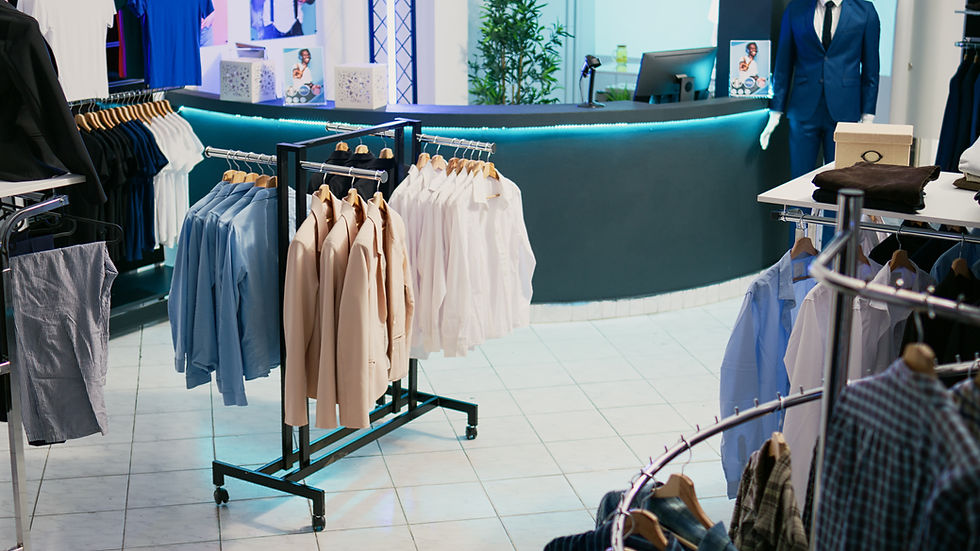Modern Fashion Supply Chain Management: A Digital Imperative
- Admin Qart
- Jul 28
- 3 min read
Updated: Oct 17
The fashion industry moves fast and depends on precision and the right platforms. Behind every new collection is a complex supply chain that includes sourcing, manufacturing, and distribution. This chain is vital for a brand's success and profits. While many brands are using digital tools for design and marketing, their core operations are often stuck in the past with outdated methods like spreadsheets and email threads. This approach slows everything down and wastes time and money. Revamping the digital fashion supply chain isn't just a trend—it's necessary. B2B fashion platforms are stepping up, giving brands the speed, visibility, and control needed from the early stages of sampling all the way to fulfilling final orders.

What Is a Fashion Supply Chain?
The fashion supply chain transforms creative design ideas into finished products for stores or online, requiring global collaboration among internal teams and external partners. It starts with product development, followed by sourcing suppliers and finalizing costs before production takes place in various locations. Logistics then manages storage, shipping, and customs clearance. Finally, products reach the market through wholesale and retail channels, with attention to tracking and fulfillment. Effective apparel supply chain management connects creativity with execution, as even minor setbacks can affect the entire process.
Key Stages Include:
Design & Development – Planning seasonal assortments, specs, and samples
Material Sourcing & Procurement – Managing supplier negotiations, MOQ terms, and raw materials
Manufacturing & Production – Aligning timelines, factory capacity, and compliance workflows
Logistics & Fulfillment – Coordinating movement through 3PLs, warehouses, and freight partners
Wholesale & Retail Delivery – Selling via wholesale platform solutions and meeting B2B deadlines
Common Challenges in Fashion Supply Chain management
Disconnected tools and outdated workflows cause recurring problems for fashion businesses, regardless of size.
Siloed Teams, Mismatched Data: Without shared platforms, cross-functional teams operate in isolation. This leads to duplicated work and slow decision-making.
Limited Inventory Visibility: Poor data syncing results in either too much stock or none at all. It’s hard to get the balance right.
Vendor Misalignment: If supplier timelines aren't synced with demand or delivery windows, delays happen—and buyers notice.
Sustainability Pressure: Retailers and consumers want transparency. Without traceable data, proving ethical sourcing or carbon reduction becomes harder than it should be.
Lack of Flexibility: One shipping delay or material shortage can knock an entire season off track if systems can't pivot in real-time.
Without integrated systems, even the most creative brand strategy falters in execution.
How B2B Fashion Platforms Solve These Challenges
Modern B2B fashion platforms are designed to replace fragmented, manual workflows with a centralized command center.
Key capabilities include:
End-to-End Visibility - One platform tracks everything from development to delivery, with AI-powered insights to forecast bottlenecks, highlight delays, and keep teams proactive.
Smarter Assortment Sharing - Many digital platforms now replace static linesheets with interactive product displays that update in real time. Buyers see live pricing, availability, specs—all in one view. It cuts down errors, saves time and streamlines trade shows & remote buying cycles.
Centralized Asset & Order Management- SKUs, product images, and pricing? All organized in one system. No more digging through old files or outdated folders. With integrated AI-powered digital asset management, assets stay current and easy to find, making things smoother across teams.
Live Inventory & Smarter Forecasting - Up-to-the-minute inventory data lets brands avoid overproduction or stockouts. Helps protect margins, too. When buyers know what’s available, they order faster. It just works better.
Stronger Logistics Coordination - Integrated systems align freight, warehouse, and retailer timelines. Fewer shipping errors. Fewer last-minute panics. Teams can actually stay ahead.
Why Going Digital Future-Proofs Your Brand
A digital fashion supply chain doesn’t eliminate complexity—it helps you manage it.
Brands that adopt AI-driven tools can:
React faster to market shifts
Reduce operational risks across multiple categories
Hit retailer deadlines with confidence
Improve sustainability tracking
Build more profitable, long-term buyer relationships
The market isn’t slowing down. Without a flexible tech stack, even the best teams struggle to keep pace.
Final Thoughts
Fashion moves quickly, but it shouldn’t crumble under pressure. Brands that see their supply chain as a growth enabler rather than a cost center are better equipped to thrive in today’s unpredictable market. Digitization boosts responsiveness and reliability, allowing teams to work faster and reduce assumptions. Whether it’s fixing inventory issues or expediting orders, connected platforms provide much-needed clarity. As demands for sustainability, speed, and transparency rise, brands that fail to adapt will struggle, while those with flexible, data-driven systems will scale smarter.
Streamline Your Fashion Supply Chain with QArt
QArt helps brands centralize inventory, streamline trade show sales automation, and manage digital linesheets—without the complexity of outdated systems.
Get in touch with the QArt Solutions team and take control of your fashion supply chain today.




Comments